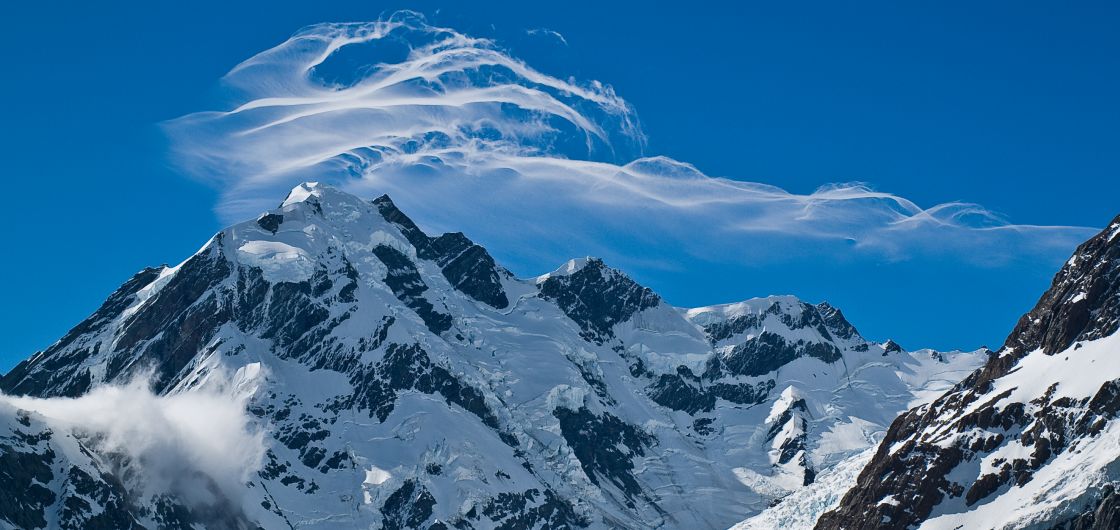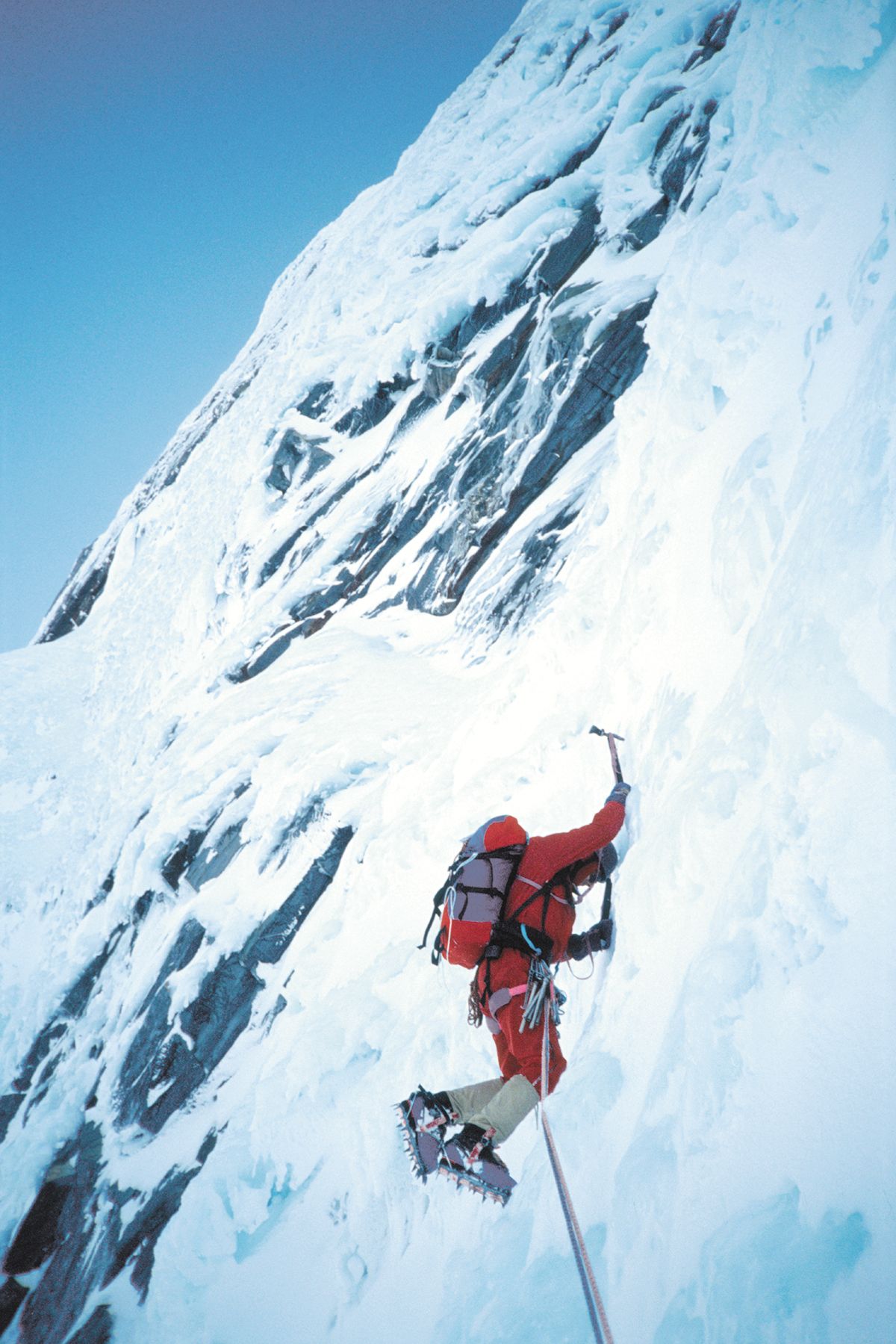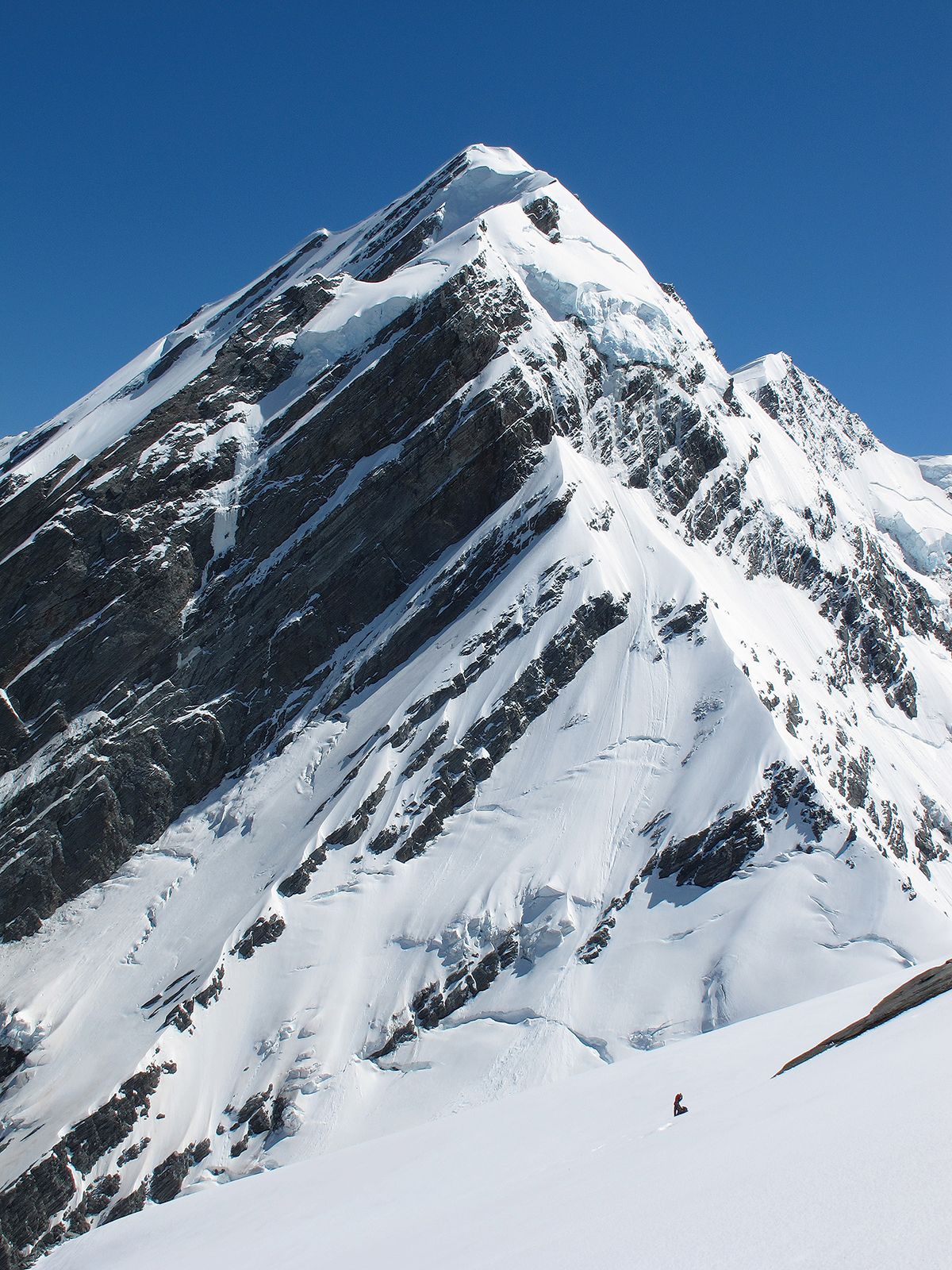
Throwback Thursday #6 - The Great Unclimbed
In The Climber issue #72 (winter, 2010) a feature ran with six of the last great unclimbed lines in the Southern Alps—The Great Unclimbed. Multiple authors identified major prizes, such as the west face of Mt Tutoko in winter, or the south-west face of Mt Percy Smith in winter. While those two routes were soloed by Guy McKinnon and Ben Dare respectively in the subsequent years, not all these prizes have been claimed. Today we revisit Pat Deavoll's contribution on the south face of La Perouse direct.
The South Face of La Perouse Direct
Back in the late eighties the most coveted unclimbed prospect in the Aoraki / Mount Cook region was the South Face of La Perouse. Several hardcore alpinist types were eyeing it up, but it wasn’t until August 1993 that Bill McLeod and Brian Alder, fresh from the first ascent of Nosferatu on Vampire’s south-east face, managed to climb the route.

Bill and Ted’s Excellent Adventure (VII, 6) follows the line of least resistance on the enormous ice flow weeping from ice cliffs beneath La Perouse’s south ridge. The pair spent two nights out on the route and descended via Baker Saddle and the head of the Hooker Glacier. At 14 pitches and grade 6+ it was the hardest climb put up in the park to date.
Not only has the route failed to have a second ascent in almost 20 years, but this massive ice flow is begging to be climbed direct. Bill and Brian diverted out right to avoid the steepest piece of climbing—what looks to be three or four pitches of magnificent grade 6 waterfall ice. Over the last decade I have had countless (actually eight) trips up the Hooker to try this line. They have all ended in … well … not climbing it.
There are several problems to overcome in attempting the direct:
- Firstly, although the top of the ice flow is easily visible from about an hour up the glacier from the Hooker Lake, whether there is ice on the bottom half isn’t evident until you: a) get right up on to Baker Saddle or, b) climb White Dream on the south face of Aoraki / Mt Cook first, for a warm up and a squizz. To make matters worse, the bottom two pitches—which traverse on ice into the bottom of the first icefall—aren’t visible until you’re within 100 metres of the route. Unfortunately, when these pitches are melted out, the rock, scraped clean by ice and un-protectable, looks like death.
- Second, I’ve found it really hard to predict when the route will be in condition and when it won’t be. I thought last winter, with the high snowfall in Canterbury, would have been a goodie, but I was proved wrong. Two years ago I went right to the base of the climb just before Christmas, and it was in great condition … apart from the first two pitches. If only I’d been there a week earlier! Other winters I’ve taken a stab based on good conditions of ice routes on the south faces of Aoraki and Hicks … but still got it wrong.
- Third, the approach ain’t for the faint hearted. Climbing the slopes onto Baker Saddle midwinter after a snowfall is not to be taken lightly. Neither is the traverse from Baker Saddle around to the base of the climb, which runs under the avalanche prone slabs running off the south ridge. To top all this off, the ice cliff at the top of the flow appears to be getting steeper and more threatening. I base this assumption on some photos taken from Mt Beatrice last spring by Australian photographer Tony Rac.

Hence my eight attempts have gone something like this:
- Climbed up onto Baker Saddle in mid-winter to dis-cover no ice on the bottom half of the face.
- Ditto.
- Ditto.
- Climbed White Dream as a warm up; looked across to discover no ice on the bottom two thirds of the face.
- Climbed up onto Baker Saddle mid-winter to discover no ice on the bottom half of the face.
- Climbed up onto Baker Saddle just before Christmas and got right to the bottom of the face thinking it’s all go, only to discover … no ice on the first two pitches.
- Walked up the Hooker mid-winter, only to be stymied by deep snow. Bivvied on glacier in cold sou’easterly, walked back out.
- Prepared to walk up the Hooker but fortuitously came into possession of some recent photos taken from an adjacent peak—they showed no ice on the top half of the face. No walking required.

But were things to go my way (and I’m quite sure that one day they will), this is how I’d do it:
- Find my ideal climbing partner—someone who’s willing to trade their share of the leads for plugging steps all the way up onto Baker Saddle—and follow them in to Gardiner Hut.
- The next day, follow them up onto Baker Saddle. Set up a bivvy. Have my partner lay a trail around to the bottom of the climb so we could head speedily around the next morning without getting lost amongst the seracs.
- Leave the bivvy around 3.00 am (carrying just a stove and down jackets) and lead my partner, who will be exhausted from two days of breaking trail, up 10–12 pitches of magnificent grade 4–6 ice.
- At the end of the ice climbing, avert my eyes from the very nasty looking ice cliff hovering above me and start my v-thread descent. I would hopefully get back to my bivvy sometime round 10.00 pm for a much-deserved cup of tea.
- The next day, my climbing partner comes back into his own when he plugs steps all the way back out to the road end.
The alternative, of course, is to take bivvy gear and go on to the summit of La Perouse, descending via Harper Saddle to the upper Hooker Glacier and Empress Hut. This climb is a serious proposition and if you want to do it in a day, you need to be climbing fast and efficiently on ice. However, in case you decide to bail, v-threading back to the base should be straight-forward from anywhere on the climb. A dozen metres of cord should be more than adequate for this so long as you don’t drop it!
By Pat Deavoll
